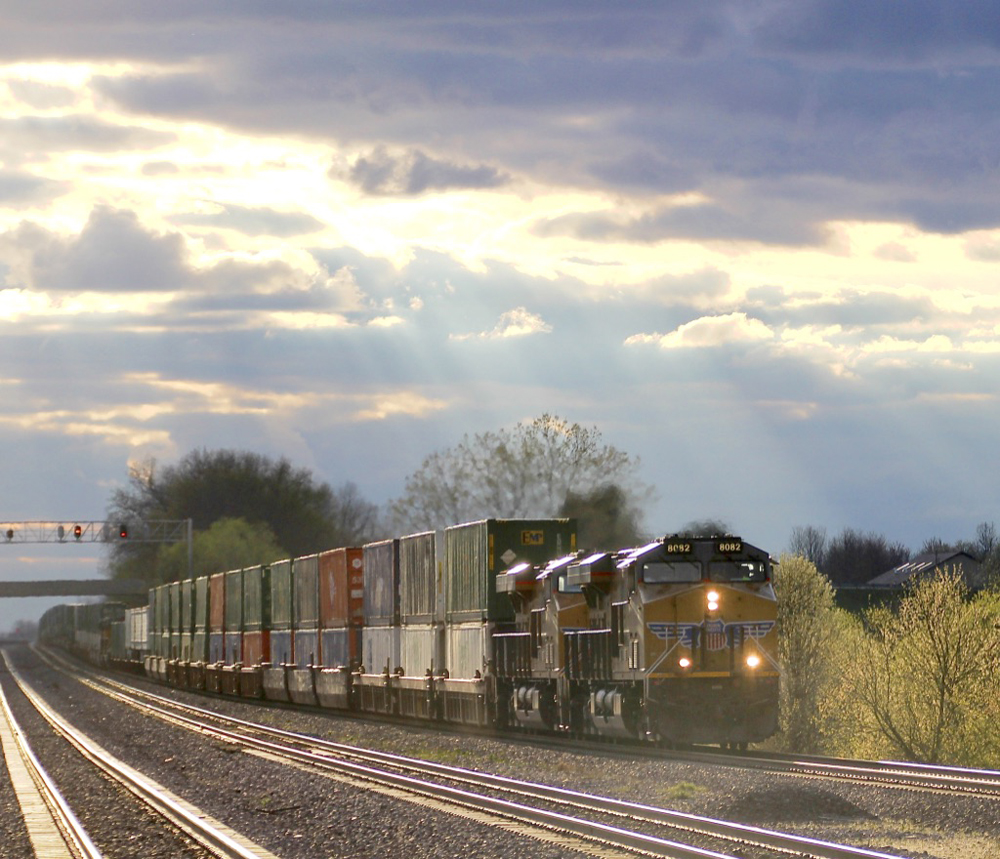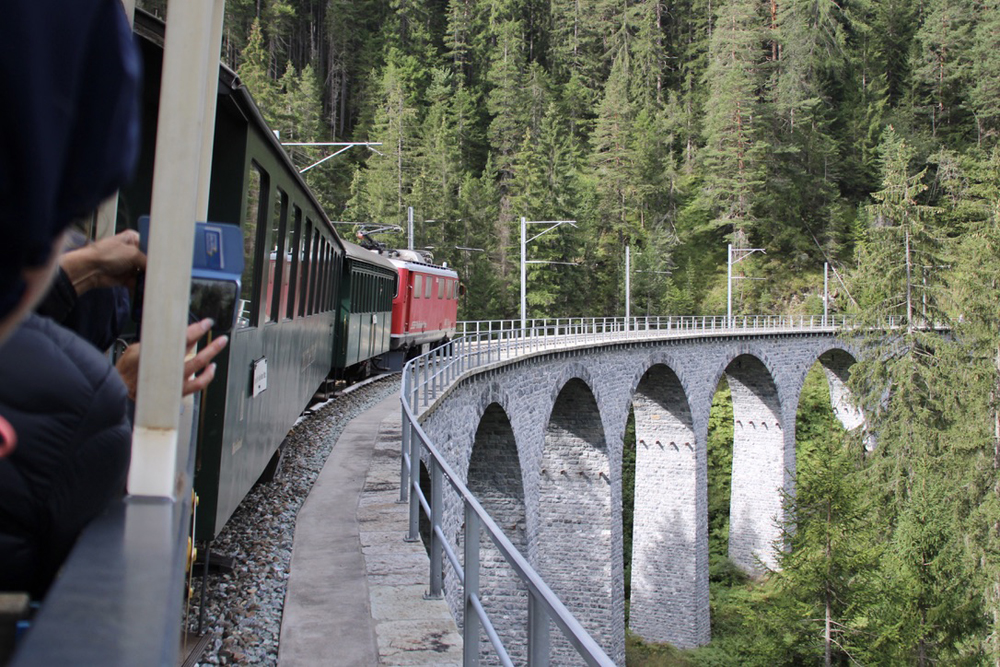
Notes from presentations by Class I railroad officials today (March 13) at the 2024 J.P. Morgan Industrials Conference:
Football fever on Union Pacific
In January and February, Union Pacific’s unionized railroaders used half of the eight new sick days that have been allotted for the year, CEO Jim Vena says. “On top of that for some reason, I don’t know what it is about NFL football weekends in January and February. There’s a lot of people that get sick on weekends,” Vena says. “It is what it is.”
He adds: “Let me just clear something up: People have always had the chance to take time off and they always will. If you’re sick we don’t expect you to come to work.”
UP carrying extra engineers
Union Pacific is carrying an extra buffer of locomotive engineers while it implements a new 11-days-on/four-days-off schedule that was part of an agreement reached with the Brotherhood of Locomotive Engineers and Trainmen last year. UP’s also carrying a train crew buffer so that it can handle a surge in traffic, Vena says.
UP’s coal conundrum
UP will be able to grow its overall traffic volume despite the ongoing and long-term decline of its Powder River Basin thermal coal business, Vena says. The railroad’s coal volume is down 16% for the year to date amid low natural gas prices, according to its latest weekly carload report. “I’m absolutely sure we’re going to offset that,” Vena says.
UP will be able to overcome the coal decline through growth in other traffic segments, including petrochemicals, plastics, intermodal, grain, the impact of near-shoring of manufacturing, and the railroad’s unrivaled access to Mexico, Vena says.
Service and price trump environmental concerns
Domestic intermodal is a tough and highly competitive market, Vena says, but UP can gain volume if it’s able to provide consistent service and operate efficiently. But he says don’t count on rail’s environmental advantages to propel a shift of freight from truck to rail. “We are 70% friendlier on greenhouse gas emissions than trucks,” Vena says. “I’ll be honest: Does that make a difference when we bring that up with a company? Not very often. Most of them go, ‘Tell me what the price is and can you be consistent?’”
CSX employment trends improving
“We feel good about our manpower levels. It took us a while to get there, but we’re pretty stable now,” CSX CEO Joe Hinrichs says. The railroad’s train crew attrition rate has fallen for a number of reasons. “We believe one of those reasons is the culture we are creating and the environment we’re trying to create with our employees and our union partners.”
Railroad families have always been a source of new workers as the next generation reaches employment age. But during the pandemic and the contentious national rail labor contract negotiations, CSX employees told friends and family not to seek jobs at the railroad. Now, CSX employees are once again recommending the railroad as a place to work, Hinrichs says, citing a recent survey of employees. “Those numbers have changed dramatically,” Hinrichs says.
Since joining the railroad in September 2022, Hinrichs has made mending fences with employees a priority, in part because providing good service hinges on having a motivated workforce. “We feel good about the progress we’re making, but I want to be very clear: There’s still a long way to go. There’s still a long way to go,” Hinrichs says. “Our employees tell us that, remind us of that, but we’ve made a lot of progress.”
Ground-based conductors
The Class I railroad push for one-person train crews proved to be highly controversial and was a stumbling block in the last round of national labor negotiations. CSX didn’t push hard for moving conductors from the locomotive cab to ground-based positions, Hinrichs says, because the railroad didn’t think it was ready for such a change.
The matter was misunderstood and poorly communicated, Hinrichs says, and the topic of engineer-only operation became a cause célèbre for labor unions.
“We have to work together with everybody to see what’s the safest, most efficient way to serve our customers. And if we stay focused on that we can take a look at options. Listen, we still hear from our employees, especially our T&E employees, the No. 1 issue is work-life balance and being stuck away from home,” Hinrichs says.
Ground-based conductors are a way to improve work-life balance, but a lack of trust has hampered talking about the topic, Hinrichs says. The younger generation of workers doesn’t want to be away from home or work holidays, Hinrichs says, yet the railroad needs to provide service every day of the year. “We’ve got to find a way to listen better to each other and be open to new solutions,” Hinrichs says.
Hinrichs says the industry must evolve. “At the end of day we’ve got to find a solution that works for everybody, but we have to be open to new ideas — otherwise we’re not going to change,” he says.
Cooperation and volume growth
Railroads can help their employees, the economy, the environment, and shareholders by working more closely together on interline service, Hinrichs says.
“Norfolk Southern is a competitor to us. I don’t view the other railroads largely as competitors to us. There’s some overlap with CN in a few spots, but generally speaking, it would be better for all of us if we worked more together,” Hinrichs says, noting he’s had discussions with the CEOs of other railroads about interline partnerships.
It’s in the industry’s best interest to cooperate on interline moves without getting hung up on length of haul and revenue divisions, he says. “I see a change in the industry in that regard, even in my short time here. And I think that’s a good change,” Hinrichs says.
“There’s a real desire to see us elevate our performance together,” he adds.
Vancouver bounces back
The Port of Vancouver, British Columbia, lost a significant amount of container traffic in the wake of last summer’s dockworker strike. Canadian Pacific Kansas City and Canadian National executives said it would take a while for volume to return to pre-strike levels. Now container imports have surged 40% over estimates, CPKC Chief Financial Officer Nadeem Velani says.
The wave of traffic has caused congestion on Vancouver’s dockside intermodal terminals, particularly on CPKC. Velani says the railway expects to chip away at the backlog and have container dwell back to normal levels by early April.
CPKC’s flagship Mexico Midwest Express cross-border intermodal service, which links Chicago with points in Mexico, has shown strong growth this year. Volume was up 30% in February compared to December, with anchor customers Schneider and Knight-Swift accounting for roughly half of the trains’ capacity. “We’re taking trucks off the road,” Velani says of CPKC’s largest freight conversion opportunity.














At one time railroaders could mark off most any time no questions asked.
When that was restricted being “Sick” was used to take time off.
Then “Personal Days” were made available but became almost impossible to schedule.
It’s to be expected that available sick days will be used for other purposes.
If Vena, a slash and burn expert is talking about it, look out guys.